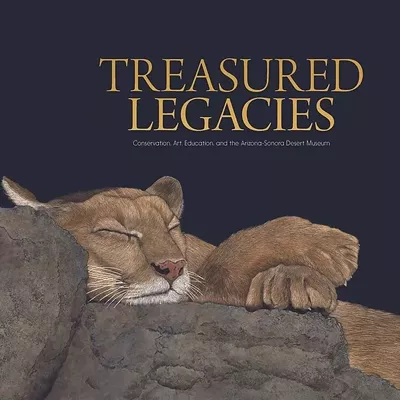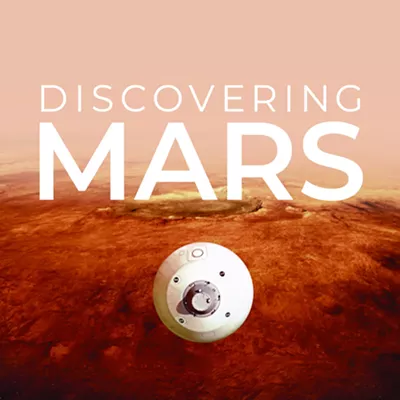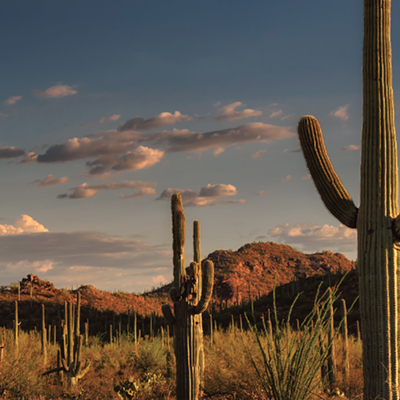As Las Vegas unveils its latest bunch of light-polluting mega-hotels, it's comforting to know that, especially in Tucson, there's still plenty of opportunity for Southwest denizens to stroll down the street at night, gaze up at the stars and be in awe of something greater than our little green globe.
More to this point, a new travel book by Douglas Isbell and Stephen E. Strom, Observatories of the Southwest: A Guide for Curious Skywatchers, reminds us that, in the telescopic community, Tucson is still known as the "astronomy capital of the world."
Unlike most other guidebooks, Observatories of the Southwest is written by people with a thorough understanding of the subject matter—not by hack journalists out to make a quick buck with a messy, often inaccurate and out-of-date clip job. Indeed, Strom is astronomer emeritus at the National Optical Astronomy Observatory at Kitt Peak, with 50 years at the highest levels of astronomy. (He's also a talented and widely published landscape photographer.) Isbell, meanwhile, has 20 years of space-science communications experience, including media campaigns for NASA's Mars Pathfinder landing and Cassini mission to Saturn. Together, these experts have produced a book that's ideal for stargazers and simple travelers alike.
The Kitt Peak chapter makes me wish I'd had the book handy before visiting the facility years back, since the information presented is much better than listening to a tour guide (even though the Kitt Peak guides were great). For instance, did you know the observatory is located on the land of the Tohono O'odham Nation, "the second-largest Native American reservation by area in the United States?"
Moreover, the mountain, called "Ioligam" by the O'odham (which translates to "mountain of Manzanita wood"), is a sacred place in tribal lore. The mountain and surrounding land are considered to be the garden I'itoi, the big brother spirit that taught the indigenous people to become self-sufficient in the desert. ... It was not until Edwin Carpenter of the University of Arizona's Steward Observatory invited the tribal council to the campus to view the night sky as astronomers view it—through a telescope—that most council members became convinced that the observatory could exist in harmony with their sacred mountain.
Sure, it sounds a little press-releasey in its diversity emphasis, but these bits of background demonstrate how man's search for meaning in the sky continues from culture to culture, tradition to tradition. The methods may change (from spiritual shamans to hard science), but, ultimately, the goal (finding man's place in a chaotic universe) remains the same. In any case, this chapter also offers a mind-blowing interview with Vera Rubin, a National Medal of Science winner who has relied extensively on Kitt Peak in her research, on the subject of "dark matter"—the invisible stuff that holds together clusters of galaxies and keeps the universe from breaking apart.
Tucsonans will also get a kick out of learning more about the Fred Lawrence Whipple Observatory, 35 miles south toward Amado, in the rugged Santa Rita Mountains. There, you'll be enthralled by the MMT, or multiple mirror telescope, of which you'll find model exhibits in the visitor center. (Sadly, this instrument, which was updated in 1999, remains off-limits to nonscientists. But from the visitor center, you can use a 20-power spotting telescope to view the MMT atop Mount Hopkins.)
And what about our poor, light-locked brothers and sisters trapped in the bright city of Las Vegas? Well, if they hop in a car and drive a couple of hundred miles east, they'll hit Flagstaff, home of Lowell Observatory, with perhaps the most colorful history of any of the observatories discussed. (It's the facility where Pluto's discovery occurred.) Highlights include a theater offering 20-minute narrated space programs every hour during the day, and "a children-focused exhibit on the workings of a telescope, with lens and eyepieces to play with."
Other observatories examined include Palomar in north San Diego County; McDonald in Fort Davis, Texas; and National Radio Astronomy Observatory Very Large Array in Socorro, N.M.
While it's true that most of the scientific equipment isn't open to the public, Observatories of the Southwest informs readers on the history of these facilities and presents informative (even to the layperson) interviews with astronomers who've pushed the field forward using incredible machines. Whether you need an excuse to tour the Southwest or have a real passion for staring into starlight, Isbell and Strom have assembled a wonderful, wondrous and very readable guidebook.







